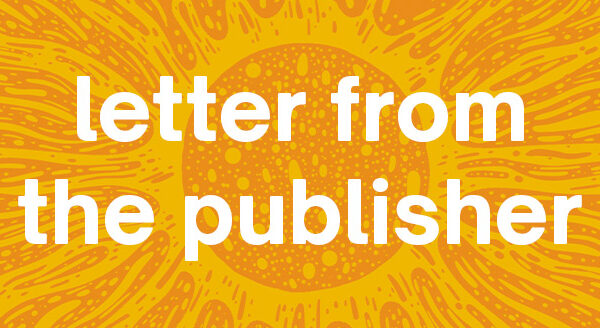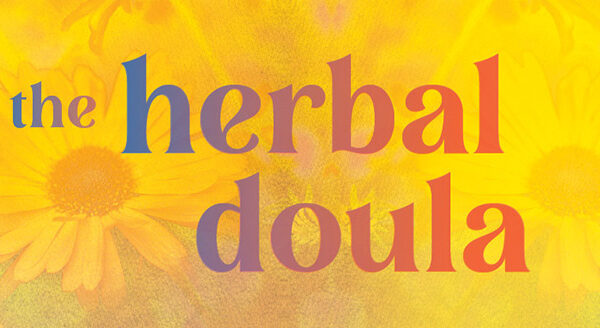
Excerpt from Embodied Activism
Categories: Bodywork & Somatics Excerpt Psychology & Personal Growth

Reconsidering Social Change
Poet and activist Audre Lorde once asserted that “the master’s tools will never dismantle the master’s house,” observing how entrenched systems of power consistently resist real change unless and until radically different interventions are deployed. Other activists maintain that many kinds of protest don’t work over the long term because they are founded on assumptions about democracy that no longer apply—for example, the assumption that if enough people communicate a clear and consistent message, it will be taken up by those in power. Still others claim that some forms of collective action aren’t sufficiently inclusive. Antipoverty activists point out that boycotts fail to include the economically disenfranchised, and disability justice activists argue that many rallies and protest marches are inaccessible to members of their community.
Even when activism results in noticeable success—in the case of marriage for same-sex couples, for instance—the insidiousness of the repercussions can be disheartening. Now that being gay is more publicly acceptable in many countries, queer liberation community organizers struggle against a tide of corporate “pinkwashing” intended to capture a growing LGBTQIA+ market and obscure the harm still being done by implicitly cisheterosexist organizations, institutions, and governments. After all the hard-won progress on civil and human rights, the resurgence of anti-Black racism and increasingly authoritarian forms of government can feel like a disheartening “one step forward, two steps back” dance with intractable forces of domination and violence.
Beyond the sometimes-glacial pace of social change in an era when actual glaciers are melting faster than ever, there are deeper issues with current forms of activism besides their long-term effectiveness. One of the most concerning is the high levels of burnout experienced among those who dedicate their lives to making a better world for everyone. Social movement scholars argue that burnout— the almost unavoidable deterioration of physical and emotional well-being due to participating in activism—is a persistent impediment to sustaining social movements. Whether this burnout is understood as a consequence of caring too much or being targeted too often, when it reaches a critical tipping point, many activists have little choice but to abandon their involvement in the very causes they once devoted their lives to. The resulting lack of sustained leadership within a movement can create fragmentation, loss of momentum, and an overall erosion of hope and goodwill.
The harsh toll that activism takes on the bodies and spirits of activists may also reflect an underlying misalignment between the tactics activists employ and their desired outcome of a more just and compassionate world. In their book Joyful Militancy, longtime activists Nick Montgomery and carla bergman articulate some of the within-movement causes of burnout related to how activists treat one another. Referred to as rigid radicalism, the scapegoating, competitiveness, intolerance, mistrust, and adherence to dogma that are hallmarks of oppressive social systems also show up in many activist communities. Unfortunately, these characteristics of rigid radicalism help to shape public perception of activists and activism as well.
At the same time, it is not difficult to understand how activist spaces may come to embody the very qualities of society they consciously disavow. When so much collective action is fueled by justified outrage, how do activists make space for joy and care? When the world is on fire, how do activists take time to breathe? When so much effort is mobilized toward achieving a particular goal, what happens to process and relationship? When survival depends upon a criti-cal analysis of overwhelmingly oppressive conditions, how do we keep our pol-itics from focusing more on destruction than creation?
These questions are not intended to suggest that current ways of engaging in activism aren’t effective at all or that the project of social change should be aban-doned as futile or irreparably flawed. It’s essential to recognize the dedication, sacrifice, and ingenuity that have helped to secure the rights and freedoms so many of us currently enjoy. And in considering the possibilities offered by a shift toward process, relationship, and pleasure, it’s important not to cast fierceness, perseverance, and being goal-oriented as oppositional rather than complementary qualities. Rather, pointing out the challenges and limitations of the existing paradigm of social change is intended to help illuminate how activism might be refined, expanded, and reconsidered.
What Does an Activist Look Like?
One of the first tasks in this revisioning is to unpack and open up prevailing notions of what constitutes activism and what an activist looks like. When you imagine an activist, perhaps you visualize someone on the street carrying a sign and shouting into a bullhorn or holding a candle at a vigil. Or perhaps you think of people working together to organize boycotts, circulate petitions, or engage in legislative lobbying. These examples illustrate a form of activism that works to put pressure on social systems by identifying an injustice and demanding change. In this scenario, the primary actors are often people on the front lines, and the primary target is typically an organization or government. But if we broaden the definition of activism by boiling it down to its most basic core—any intentional action taken with the goal of positive social change—then other forms of activism become available for our consideration.
Deepa Iyer’s mapping of roles in a social change ecosystem highlights some additional ways of being an activist. While those who serve as community organizers and frontline responders may be the most visible players, there are other equally crucial roles: the caregivers who nourish and sustain community members, the storytellers who craft and preserve the legacy of struggle, and the healers who tend to the collective intergenerational trauma caused by oppressive social conditions. According to Iyer, one of the keys to effective and sustainable activism is to engage in a process of ongoing self-reflection that helps to identify the roles that best suit one’s temperament and leverage one’s strengths.
Another feature of the activist stereotype is someone who works extensively with others and is enlivened by being part of a group or community—in other words, an extrovert. This focus on group interaction can be challenging for introverts, who may prefer working alone or with just a few others. Sara Corbett, a self-described introvert activist, notes that quiet activities like writing letters or making crafts can provide an opportunity for deep-thinking introverts to have their voices heard.
Corbett challenges another stereotype about activism as well: that to be effective, one must direct outrage at those perpetrating the injustice. Instead of adopting a “shaming and shouting” approach, she advocates for quiet actions that appeal to the better natures of those in power. For example, a group that Corbett was working with launched a campaign that involved sending handmade handkerchiefs to the board members of Marks & Spencer, a large UK-based retail chain, to persuade them to pay employees a living wage. These gifts were followed by hand-delivered cards celebrating Valentine’s Day and Christmas. Within ten months, the organization announced the implementation of a living wage policy. For Corbett, the quiet intimacy of a one-to-one personal touch made the difference in this campaign and demonstrated the effectiveness of “introvert activism.”
Some social change agents might not necessarily even identify as activists or understand their work to be activism. But this doesn’t mean their efforts don’t make a big (and sometimes crucial) impact on social movements or political issues. For example, the role of art in activism has a long and impressive history. The antiwar experimental art of the 1920s Dadaist movement in Berlin, Mexican muralists protesting for worker protection, African American civil rights documentary photography, Vietnam war protest anthems of the 1960s, and the feminist performance art of the anonymous gorilla-masked Guerilla Girls are just a few examples. Augusto Boal’s Theater of the Oppressed harnesses dramatic techniques to examine everyday issues of injustice, and dance as activism has a long and vibrant history that continues to this day.
Stephen Duncombe and Steve Lambert with the Center for Artistic Activism say art can play a crucial role in social change efforts.7 Duncombe and Lambert note that most activism is focused on creating an effect—for example, the effect of changing an unjust social norm, policy, or law. On the other hand, they say, art occupies itself primarily with generating affect—eliciting a particular emotion, such as compassion, outrage, or pride. Artistic activism harnesses the power of creative feeling and brings it together with the directed intention of social action. Recognizing artists as activists opens up another facet of an unnecessarily limiting stereotype of what an activist looks like.
Activism also occurs in another (perhaps surprising) corner of the social world—among academic researchers. Although the term researcher might conjure images of someone in a white lab coat conducting experiments in a university laboratory, many researchers do important work that looks nothing like our preconceived notions. Across a wide range of academic disciplines—including anthropology, education, gender studies, psychology, and critical race studies— activist researchers work to help the world better understand the root causes of inequality, suffering, and systemic violence by illuminating the lived experiences of those who experience these injustices. Working alongside these communities, activist researchers develop strategies for transforming oppressive conditions by using their investigative and analytic skills in the service of social change.
As the preceding examples suggest, activism is as varied and creative as the humans who engage in it. Although organized community action in the form of boycotts, information campaigns, strikes, vigils, and public protests will always be an important tool in stirring up what renowned civil rights activist John Lewis called “good trouble,” expanding our vision of what an activist looks like can encourage deeper, broader, and more diverse participation in the collective work of changing the world.




